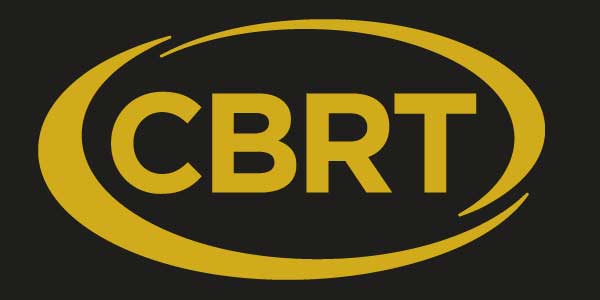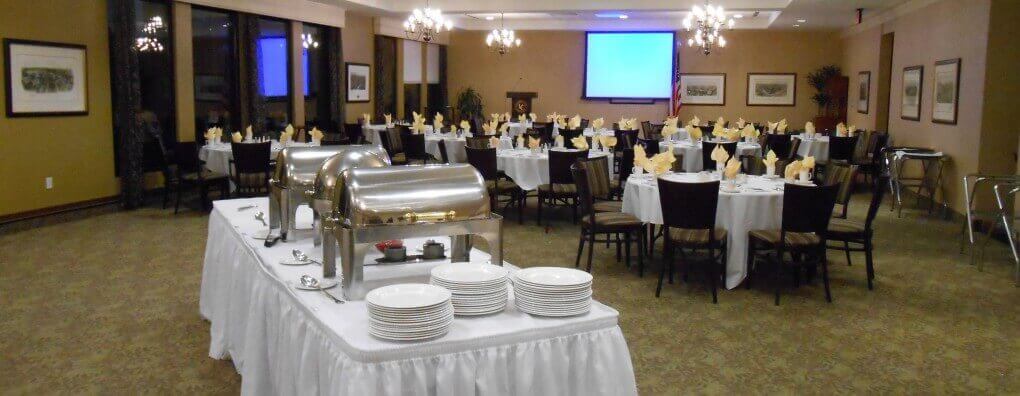Building and Sustaining a Dynamic Leadership Team
August 21, 2014
As we prepare for our Grand Rapids Leadership Event this Friday, August 22nd with speaker Love Collins, we’re reflecting on the discussions we had on his topic at our August Round Table Meetings.
As always, we are encouraged, inspired and challenged by all of the Round Table Meeting discussions. Below are the combined notes for your reference. We look forward to seeing you all at our event on Friday.
Kalamazoo, Friday August 6, 2014
Challenge:
- Finding the right people
- Choosing leaders, defining roles
- Leadership is not about you.
- Different types of leadership
- Defining and adding positions
- Leadership sustainability, long transitions
- Succession planning
- Behavior behind the words is consistent over time.
- Succession planning
- Hard to know if you’re speaking the same language or not. Selecting people based on what they say isn’t always best.
- Actions speak louder than words
- Training & developing leaders
- How to maintain vision and values from small to nationwide
- Training the next generation of leaders
- How to build a vision to train others to take the vision from start to finish
- Know where you’re going and know the diverse skill sets that will get you there.
- Employee referrals are Key in finding new people.
Solution:
- Think differently than traditional organizational design.
- Leadership doesn’t always mean a one-way career path.
- Huge cost when you have to transition to the next leader.
- Diversity of thought, spirit of the person – servant leadership.
- Struggle with compensation to reward people. Need to find other creative rewards other than $.
- Focused efforts on the 20% of tasks that will move things in the right direction.
- Set up the succession plan so the next generation of leaders can build upon what you’ve built, not going back over work that has already been done and recreating procedures that have already been defined & are working.
- Development of really good talent
- Set up a team that’s passionate about what they do. On board people who embrace those core values.
- How to adapt to an existing team
- “If you prepare for a fire, it usually doesn’t happen”
- Different roles, not job title.
- Think of others as better than yourselves.
Takeaway:
- Set realistic goals for your team & allow them to win!
- Have to be engaged, don’t build too many walls, often we are too focused on doing a job, not the job that is best for the company/team.
- Seek to be more collaborative and less confrontational.
- Set your priorities and stick to them. You can’t do it all. Weed out what’s not important.
Kalamazoo, Tuesday August 12, 2014
- Having the right people in the right spot.
- Leaders – Dream team concept
- National Nail example: 2008 recession, 2013-2014 new impact team can’t keep up.
- “Mole” Game – leadership perspective: promoting talent and recruiting talent
- Become an expert of people. Learn to evaluate and understand them.
- Not everyone wants to be in Leadership even though society says that is when you are at the top.
- Who’s driving the bus?
- Dynamic leadership is not having rigid or nonflexible leaders.
- Balance – Not having too much or too little structure.
- Servant Leadership – helping other leadership succeed
- Changing world – keep up with changes
- Develop your employees potential
- When you bring new employees on do they match your culture? Sit down with them set expectations and make them clear. Always raise the bar with time. Stay close to them and help them get there.
- Where do you invest your energy? Can’t/Won’t If your employee “Can’t”, teach them. If your employee “won’t”, they need to move on.
- Are you hiring for today or tomorrow? Know if your company is outgrowing your employee. Both need development. Do they have an eagerness to learn? Will they be the next generation leader? Keep them engaged.
- Define what leadership looks like.
- Do your employees come expecting the survival of the company? Coming to work with an attitude of giving.
- “People will buy what they want and beg for what they need.”
- Set proper expectations for your team and how to get there.
- Will our retirement be a crisis for the company? Develop the right people. Keep your eye out for our replacement, looking for positions that will stretch and train your employee to be ready for leadership.
- Always be on top of my game. Seeing people who have good attitudes and want to grow the company.
- Mentoring, accountability and being engaged
Take away:
- Have the right people on the bus.
- Make it a priority to schedule and be disciplined. Taking time with each manager and leader.
- Jesus Christ is a great example of leadership.
- Pro athletes get compensated on their past. Sometimes being overcompensated lends to less productivity. Make sure they are being measured and evaluated regularly.
- Focus on one person.
- See who rises to the occasion for potential leaders. Give them the tools to be successful.
- Who is still hungry and interested in the organization? Develop them.
- Create structure to get out of the weeds.
- Build character, have expectations and less politics.
- Make it a daily activity to set aside time to build employees.
- The difference between leaders and managers is: Leaders follow because they want to. Managers follow because they have to.
- Intentional focus- Pit crew example
Kalamazoo Thursday, August 14, 2014
What does it take to build and sustain a dynamic leadership team?
- Match the person with culture.
- Provide a good working environment.
- From the top down, have the right people in the right seat doing the right thing.
- Have the leadership be like-minded.
- Salary and benefits are a must, but if the Leadership is there for the money it is the wrong person.
- Hire slowly, fire quickly.
- Hire leadership with integrity and high values.
- Jeep illustration: My dad was in WWII. His assigned job was a driver for the Colonel at night. His Colonel would tell him to turn his lights off while the Colonel himself ran in front of the jeep to check everything out. This is a great example of Leading by example. Despite his higher rank, the Colonel actually ran point for the driver. Leading by serving. Be the first one in and the last one out.
- Treat your leadership how you want to be treated.
- Good communication is a must. Give opportunity for honest input.
- Accountability: Our leadership/employees all rate each other on a form online. It has different sections to be rated like virtues, trust, dependability, etc.
- When hiring we like to use the “Strength Finder” to help see professional and core competencies. Professional competencies can be taught, core competencies can’t.
- Hire for your future.
- Maintain Leadership communication.
- Demonstrate goals to leadership and then actions to those goals. Have a common plan.
- Referrals for hire from good employees still need to go through the process.
- Communication with feedback. How do you receive feedback?
Take away:
- Communicate
- Don’t take communication for granted. Keep it open.
- Give incentives/compensation around core values.
- Run in front of the Jeep illustration
- Pull don’t push, just lead.
- Lead by example.
- No one is going to be better than the Leader.
Grand Rapids Thursday, August 14, 2014
Our Challenges:
- Change comes, all the time and from all directions; sometimes it is expected and sometimes it is a surprise.
- Vetting new members to the leadership team is a challenge.
- Networking: sometimes it works for us, but sometimes it works against us, as in when the person who brings others onto the team departs too soon.
- We face challenges from ownership transitions, multiple (remote) locations, and family members who share ownership.
- Scarcity mentality creates challenges, especially when it stems from insecurity and in turn is manifested as a lack of trust.
- Culture clashes – social, political, faith-based or other – create challenges.
- Competitiveness, ego and pride are at the root of many of the challenges.
- Board turnover creates challenges.
The Solutions:
- Recognize that each person has different strengths, experiences and gifts. Then encourage each other with a healthy amount of humility.
- Put good boundaries in place, as in “keep family dynamics and business dynamics separate.”
- Follow this recipe to help instill a dynamic and consistent corporate culture, especially when the leadership team is spread out over different departments, states, countries, families, etc., 1) make regular personal contact, 2) make occasional live visits, 3) be aware of cultural differences to harness the power of diversity, and 4) instill alignment with a clear and consistent set of core principles and values.
- Always anticipate change.
- A dynamic leadership team invests primarily in strategic planning, empowering technical staff to deliver technical expertise.
The Takeaway – Be Prepared for Change
- Patterns of ineffectiveness must be addressed immediately, if not sooner.
- Dynamic leadership teams are bathed in prayer and are bathing others in prayer.
- Dynamic leadership develop structural elevation plans and engage in other forms of succession planning.
- Dynamic leadership teams model trust by extending authority (to empower others) wherever there is responsibility (accountability and measured performance metrics).
Grand Rapids Tuesday August 12, 2014
Your Challenge:
- Alignment of goals
- Keeping everyone on the same critical path
- Keeping everyone in their assigned areas / strengths
- Lack of organizational clarity
- “idea ownership” does not mean they “own” the idea in terms of execution
- Right People of the Bus – Jim Collins Book – Good to Great
- In smaller companies – not enough challenges or areas to grow
- Attracting and maintaining key management people
The Solution:
- Lead by example – “Law of the Lid” – John Maxwell – 21 Irrefutable Laws of Leadership
- It’s we, not me
- Align incentive plans with goals and create common win / win scenarios
- Create stay bonuses or phantom stock plans for long term buy in – and update results
- Leaders need to move beyond filling in for weaknesses and play to strengths
The Take Away:
- Invest in your team – personality profiles, training, etc.
- Clearly define and measure goals
- Constantly reinforce those goals
- Understand what motivates a teammate (not necessarily money) and align that incentive with corporate goals
Interested in joining a Round Table Group? Contact Us today!
